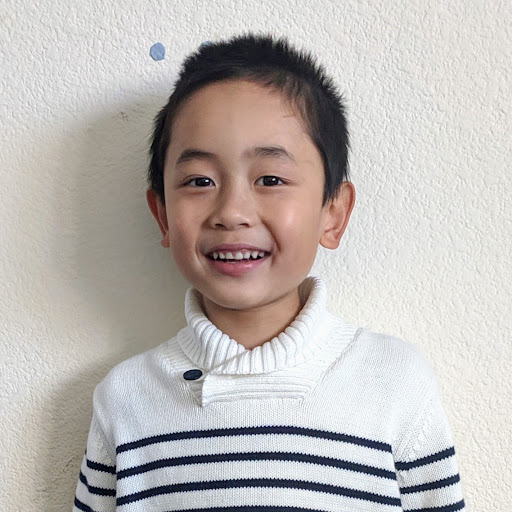Jing Lin
age ~55
from Lafayette, CA
- Also known as:
-
- Lin J Ing
- Jin Ling
- Phone and address:
- 3 Dollis Park Rd, Lafayette, CA 94549
Jing Lin Phones & Addresses
- 3 Dollis Park Rd, Lafayette, CA 94549
- San Mateo, CA
- Oakland, CA
- El Sobrante, CA
- Albany, CA
- El Monte, CA
- San Jose, CA
- Corte Madera, CA
- San Leandro, CA
Lawyers & Attorneys

Jing Lin - Lawyer
view sourceAddress:
Skadden Arps Slate Meagher & Flom
37404748xx (Office)
37404748xx (Office)
Licenses:
New York - Currently registered 2007
Education:
Cornell Law School
Isbn (Books And Publications)

The Red Guards' Path to Violence: Political, Educational, and Psychological Factors
view sourceAuthor
Jing Lin
ISBN #
0275938727


The Opening of the Chinese Mind : Democratic Changes in China since 1978
view sourceAuthor
Jing Lin
ISBN #
0275945944

Name / Title
Company / Classification
Phones & Addresses
Principal
Jing Jin Lin Plumbing Co
Plumbing/Heating/Air Cond Contractor
Plumbing/Heating/Air Cond Contractor
42 Lee Ave, San Francisco, CA 94112
4153342928
4153342928
Spoil Yourself, LLC
Personal Services-Massage
Personal Services-Massage
100 W Broadway, Glendale, CA 91210
5147 Xavier Cmn, Fremont, CA 94555
130 14 St, Oakland, CA 94612
5108930803
5147 Xavier Cmn, Fremont, CA 94555
130 14 St, Oakland, CA 94612
5108930803
LIN'S RESTAURANT LC
EASTERN BUFFET LLC
Signaldt Biosystems, LLC
Biotech · Commercial Physical Research
Biotech · Commercial Physical Research
39 California Ave, Pleasanton, CA 94566
Phoenix Real Investment LLC
General Investment and Consulting With P · Real Estate Land Holding Residential Ren · Investor · Investors, Nec
General Investment and Consulting With P · Real Estate Land Holding Residential Ren · Investor · Investors, Nec
5036 Cerreto St, Pleasanton, CA 94568
5566 San Juan Way, Pleasanton, CA 94566
5566 San Juan Way, Pleasanton, CA 94566
Hm International, LLC
Import - Export Trading Company
Import - Export Trading Company
34659 Lang Ave, Fremont, CA 94555
Us Patents
-
Method For Automatically Generating Checkers For Finding Functional Defects In A Description Of A Circuit
view source -
US Patent:6609229, Aug 19, 2003
-
Filed:Aug 9, 2000
-
Appl. No.:09/635598
-
Inventors:Tai An Ly - Fremont CA
Jean-Charles Giomi - Menlo Park CA
Kalyana C. Mulam - San Jose CA
Paul Andrew Wilcox - Palo Alto CA
David Lansing Dill - Redwood City CA
Paul Estrada, II - Los Altos CA
Jing Chyuarn Lin - Sunnyvale CA
Robert Kristianto Mardjuki - Danville CA
Ping Fai Yeung - San Jose CA -
Assignee:O-In Design Automation, Inc. - San Jose CA
-
International Classification:G06F 1750
-
US Classification:716 4, 703 14, 703 17
-
Abstract:A programmed computer generates descriptions of circuits (called âcheckersâ) that flag functional defects in a description of a circuit undergoing functional verification. The programmed computer automatically converts the circuits description into a graph, automatically examines the graph for instances of a predetermined arrangement of nodes and connections, and automatically generates instructions that flag a behavior of a device represented by the instance in conformance with a known defective behavior. The checkers can be used during simulation or emulation of the circuit, or during operation of the circuit in a semiconductor die The circuits description can be in Verilog or VHDL and the automatically generated checkers can also be described in Verilog or VHDL. Therefore, the checkers can co-simulate with the circuit, monitoring the simulated operation of the circuit and flagging detective behavior. The programmed computer can automatically determine load conditions of registers in the circuit and automatically generate checkers to flag data loss in the registers.
-
Method For Automatically Searching For Functional Defects In A Description Of A Circuit
view source -
US Patent:6885983, Apr 26, 2005
-
Filed:May 4, 2001
-
Appl. No.:09/849005
-
Inventors:Robert Kristianto Mardjuki - Danville CA, US
David Lansing Dill - Redwood City CA, US
Jing Chyuarn Lin - Sunnyvale CA, US
Ping Fai Yeung - San Jose CA, US
Paul Il Estrada - Los Alto CA, US
Jean-Charles Giomi - Menlo Park CA, US
Tai An Ly - Fremont CA, US
Kalyana C. Mulam - San Jose CA, US
Paul Andrew Wilcox - Palo Alto CA, US -
Assignee:Mentor Graphics Corporation - Wilsonville OR
-
International Classification:G06F017/50
-
US Classification:703 14, 703 15, 703 16, 716 4
-
Abstract:A programmed computer searches for functional defects in a description of a circuit undergoing functional verification in the following manner. The programmed computer simulates the functional behavior of the circuit in response to a test vector, automatically restores the state of the simulation without causing the simulation to pass through a reset state, and then simulates the functional behavior of the circuit in response to another test vector. A predetermined rule can be used to identify test vectors to be simulated, and the predetermined rule can depend upon a measure of functional verification, including the number of times during simulation when a first state transition is performed by a first controller at the same time as a second state transition is performed by a second controller. During simulation of the test vectors, manually generated tests or automatically generated checkers can monitor portions of the circuit for defective behavior.
-
Method For Automatically Generating Checkers For Finding Functional Defects In A Description Of Circuit
view source -
US Patent:7007249, Feb 28, 2006
-
Filed:Jan 20, 2003
-
Appl. No.:10/348116
-
Inventors:Tai An Ly - Fremont CA, US
Jean-Charles Giomi - Menlo Park CA, US
Kalyana C. Mulam - San Jose CA, US
Paul Andrew Wilcox - Palo Alto CA, US
David Lansing Dill - Redwood City CA, US
Paul II Estrada - Los Alto CA, US
Jing Chyuarn Lin - Sunnyvale CA, US
Robert Kristianto Mardjuki - Danville CA, US
Ping Fai Yeung - San Jose CA, US -
International Classification:G06F 17/50
-
US Classification:716 4, 716 5, 703 13, 703 20, 703 23, 703 28
-
Abstract:A programmed computer generates descriptions of circuits (called “checkers”) that flag functional defects in a description of a circuit undergoing functional verification. The programmed computer automatically converts the circuit's description into a graph, automatically examines the graph for instances of a predetermined arrangement of nodes and connections, and automatically generates instructions that flag a behavior of a device represented by the instance in conformance with a known defective behavior. The checkers can be used during simulation or emulation of the circuit, or during operation of the circuit in a semiconductor die. The circuit's description can be in Verilog or VHDL and the automatically generated checkers can also be described in Verilog or VHDL. Therefore, the checkers can co-simulate with the circuit, monitoring the simulated operation of the circuit and flagging defective behavior. The programmed computer can automatically determine load conditions of registers in the circuit and automatically generate checkers to flag data loss in the registers.
-
Method For Automatically Searching For Functional Defects In A Description Of A Circuit
view source -
US Patent:7478028, Jan 13, 2009
-
Filed:Jan 12, 2005
-
Appl. No.:11/035275
-
Inventors:Robert Kristianto Mardjuki - Danville CA, US
David Lansing Dill - Redwood City CA, US
Jing Chyuarn Lin - Sunnyvale CA, US
Ping Fai Yeung - San Jose CA, US
Paul II Estrada - Los Alto CA, US
Jean-Charles Giomi - Menlo Park CA, US
Tai An Ly - Fremont CA, US
Kalyana C. Mulam - San Jose CA, US
Paul Andrew Wilcox - Palo Alto CA, US -
International Classification:G06F 17/50
-
US Classification:703 14, 703 15, 703 16, 716 4
-
Abstract:A programmed computer searches for functional defects in a description of a circuit undergoing functional verification in the following manner. The programmed computer simulates the functional behavior of the circuit in response to a test vector, automatically restores the state of the simulation without causing the simulation to pass through a reset state, and then simulates the functional behavior of the circuit in response to another test vector. A predetermined rule can be used to identify test vectors to be simulated, and the predetermined rule can depend upon a measure of functional verification, including the number of times during simulation when a first state transition is performed by a first-controller at the same time as a second state transition is performed by a second controller. During simulation of the test vectors, manually generated tests or automatically generated checkers can monitor portions of the circuit for defective behavior.
-
Engineering Change Order Process Optimization
view source -
US Patent:7552409, Jun 23, 2009
-
Filed:Jun 7, 2005
-
Appl. No.:11/147814
-
Inventors:Kayhan Kucukcakar - Sunnyvale CA, US
Jing C. Lin - Cupertino CA, US
Jinan Lou - Cupertino CA, US -
Assignee:Synopsys, Inc. - Mountain View CA
-
International Classification:G06F 17/50
-
US Classification:716 5, 716 6, 703 16
-
Abstract:A method for reaching signoff closure in an ECO (engineering change order) process involves the use of violation context data from the signoff tool as the basis for design layout modifications in an implementation tool. The violation context data includes violation information other than violation location/path information. Because the signoff tool, and more specifically, the signoff algorithm used by that tool is the most accurate model of actual IC behavior, the use of violation context data generated by the signoff tool to implement changes to the design layout will generally produce appropriate and effective results. By accessing this violation context data from the signoff tool, an implementation tool need not rely on its less accurate implementation analysis to determine the optimal design layout modifications for correcting violations detected by the signoff tool.
-
Vapor Deposition Of Tungsten Materials
view source -
US Patent:7732327, Jun 8, 2010
-
Filed:Sep 26, 2008
-
Appl. No.:12/239046
-
Inventors:Avgerinos V. Gelatos - Redwood City CA, US
Kai Wu - Palo Alto CA, US
Amit Khandelwal - Santa Clara CA, US
Ross Marshall - Sunnyvale CA, US
Emily Renuart - Santa Clara CA, US
Wing-Cheong Gilbert Lai - Santa Clara CA, US
Jing Lin - Mountain View CA, US -
Assignee:Applied Materials, Inc. - Santa Clara CA
-
International Classification:H01L 21/4763
-
US Classification:438649, 438683, 427255392, 257E21165
-
Abstract:Embodiments of the invention provide an improved process for depositing tungsten-containing materials. The process utilizes soak processes and vapor deposition processes to provide tungsten films having significantly improved surface uniformity while increasing the production level throughput. In one embodiment, a method is provided which includes depositing a tungsten silicide layer on the substrate by exposing the substrate to a continuous flow of a silicon precursor while also exposing the substrate to intermittent pulses of a tungsten precursor. The method further provides that the substrate is exposed to the silicon and tungsten precursors which have a silicon/tungsten precursor flow rate ratio of greater than 1, for example, about 2, about 3, or greater. Subsequently, the method provides depositing a tungsten nitride layer on the tungsten suicide layer, depositing a tungsten nucleation layer on the tungsten nitride layer, and depositing a tungsten bulk layer on the tungsten nucleation layer.
-
Pre-Route And Post-Route Net Correlation With Defined Patterns
view source -
US Patent:8336015, Dec 18, 2012
-
Filed:Jan 29, 2010
-
Appl. No.:12/697142
-
Inventors:Chi-Min Chu - Cupertino CA, US
Jing C. Lin - Cupertino CA, US -
Assignee:Synopsys, Inc. - Mountain View CA
-
International Classification:G06F 17/50
-
US Classification:716132
-
Abstract:A method of improving pre-route and post-route correlation can include performing an initial placement, virtual routing, and lower-effort actual routing for the design. The results of the virtual routing and lower-effort actual routing can be compared to identify nets having miscorrelation. Based on the nets having at least a predetermined miscorrelation, one or more patterns can be defined. At this point, net routing constraints and/or scaling factors can be assigned to nets matching the defined patterns. These net routing constraints and scaling factors can be applied to the nets of the design that match the patterns. Optimized placement and a higher-effort actual routing of the design can be performed using the nets with the applied net routing constraints and scaling factors. An optimized, routed design can be generated as output.
-
System And User Interface For Machine-Assisted Human Labeling Of Pixels In An Image
view source -
US Patent:8452086, May 28, 2013
-
Filed:Jul 10, 2009
-
Appl. No.:12/500928
-
Inventors:Eric Saund - San Carlos CA, US
Jing Lin - Saratoga CA, US
Prateek Sarkar - Sunnyvale CA, US -
Assignee:Palo Alto Research Center Incorporated - Palo Alto CA
-
International Classification:G06K 9/34
-
US Classification:382164, 715810
-
Abstract:A user interface and method is embodied on a computer readable medium and executable on a computer. The user interface is a labeler which labels only foreground pixels of an image stored in a computing environment. The labeler operates in a Region mode/state and Brush mode/state, and includes a Tentative mode that permits an assigned label to be changed after pixels have been selected. Groups of pixels may be selected for labeling at once by a point-and-click command, and a pixel may belong to one or more groups of pixels which are stored in memory as image layers. The groups are formed dynamically by user selection actions, and/or through automatic recognition algorithms. Pixels already labeled with certain labels may be locked to not be altered by additional labeling operations. Unassigned pixels may be highlighted to increase the ease at which they are identified in an image. Comparisons between labeled images are undertaken to indicate differences between different groundtruth labeling.
License Records
Jing Lin
License #:
58175 - Expired
Category:
Nursing
Issued Date:
Dec 20, 2000
Effective Date:
Jan 3, 2003
Expiration Date:
Oct 31, 2002
Type:
Registered Nurse
Resumes

Jing Lin
view sourceLocation:
18036 Walnut Rd, Castro Valley, CA 94546
Work:
Lci 2007 - 2013
Operations Analyst
Operations Analyst
Languages:
English

Jing Lin
view sourceSkills:
Lin
Sports
Jing
Sports
Jing

Jing Lin
view source
Jing Lin
view source
Jing Lin
view source
Assistant Chemist At Iit Research Institute
view sourcePosition:
Assistant Chemist at IIT Research Institute
Location:
Chicago, Illinois
Industry:
Chemicals
Work:
IIT Research Institute - Greater Chicago Area since Aug 2009
Assistant Chemist
Assistant Chemist
Education:
Illinois Institute of Technology 2008 - 2010
Master's degree, Chemistry Xiamen University 2003 - 2007
Bachelor of Science (B.S.), Chemical Engineering
Master's degree, Chemistry Xiamen University 2003 - 2007
Bachelor of Science (B.S.), Chemical Engineering
Interests:
Reading, Music, Travelling
Languages:
Chinese
English
English

Jing Lin
view sourceLocation:
United States

Jing Lin
view sourceLocation:
United States
Medicine Doctors

Jing Lin
view sourceSpecialties:
Neonatal-Perinatal Medicine
Work:
Newborn Medicine AssociatesMount Sinai Hospital Newborn Medicine
1184 5 Ave STE 341, New York, NY 10029
2122415446 (phone), 2125345207 (fax)
1184 5 Ave STE 341, New York, NY 10029
2122415446 (phone), 2125345207 (fax)
Education:
Medical School
Wenzhou Med Coll, Wenzhou, Zhejiang, China
Graduated: 1983
Wenzhou Med Coll, Wenzhou, Zhejiang, China
Graduated: 1983
Languages:
English
Spanish
Spanish
Description:
Dr. Lin graduated from the Wenzhou Med Coll, Wenzhou, Zhejiang, China in 1983. He works in New York, NY and specializes in Neonatal-Perinatal Medicine. Dr. Lin is affiliated with Mount Sinai Medical Center.
Plaxo

Jing LIN
view sourceJRD

^_^lin jing(8565-0579)
view sourceMagazine
Classmates

Jing Lin
view sourceSchools:
Maple Ridge secondary Maple Ridge Saudi Arabia 2001-2005
Community:
Ronald Henschel, Erin Malenfant, David Langton

Jing Lin
view sourceSchools:
British Columbia Institute Of Technology Burnaby Saudi Arabia 1998-2002
Community:
Maria Calleja, Roth Hall, John Leonard, Catherine Lohe, Rick Morgan

Jing Lin
view sourceSchools:
Salk School of Science 255 New York NY 1994-1998
Community:
Jakob Deweerdt, Jennifer Sherard, Yoshi Ikegami, Kaitlyn Link, Indio Thomas, Joey Mejia

Jing Lin
view sourceSchools:
NYU-New York University New York NY 2008-2012
Community:
Barbara Bohanan, Barbara Acey

British Columbia Institut...
view sourceGraduates:
anne Lilburn (1998-2002),
Jing Hui Zhao (2001-2005),
Lauri Opperman (1977-1981),
Jing Lin (1998-2002)
Jing Hui Zhao (2001-2005),
Lauri Opperman (1977-1981),
Jing Lin (1998-2002)

Jinan University, Guangzhou
view sourceGraduates:
Lin Jing (2001-2005)

Beijing Bayi High School...
view sourceGraduates:
Yangui Lin (1996-2000),
Jing Lu (1992-1996),
Jian Huang (1977-1981),
Daohua Chen (1997-2001),
Lin Jing Yang (1982-1986)
Jing Lu (1992-1996),
Jian Huang (1977-1981),
Daohua Chen (1997-2001),
Lin Jing Yang (1982-1986)

New Utrecht High School, ...
view sourceGraduates:
Jing Lin (2002-2006),
Howee Gordon (1965-1969),
Kiereece Simpson (1999-2003),
Jeanine Capala (1984-1988),
Kristen Maneggio (1999-2003)
Howee Gordon (1965-1969),
Kiereece Simpson (1999-2003),
Jeanine Capala (1984-1988),
Kristen Maneggio (1999-2003)

Jing Yong Lin
view source
Jing Bao Lin
view source
Jing Qi Lin
view source
Jing Xiang Lin
view source
Jing Lin
view source
Jing Lin
view source
Jing Jing Lin
view source
Lin Jing
view sourceGoogleplus

Jing Lin
Education:
University of Texas at Austin, Tsinghua University

Jing Lin
Education:
SMK Bagan Jaya

Jing Lin
Education:
University of Maryland, College Park - Accounting/IS

Jing Lin
Education:
Marymount University - BSN

Jing Lin

Jing Lin

Jing Lin

Jing Lin
Youtube
Myspace
Flickr
Get Report for Jing Lin from Lafayette, CA, age ~55













